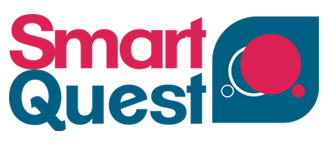
By: Shiyara Dassanayake
PCC | Attorney- at – Law | Life Coach | Corporate Trainer | NLP Practitioner
In the dynamic space of coaching, insight often begins with awareness—and awareness thrives in reflection. Over the years, one of the most heart-warming moments in a coaching conversation has been witnessing a client gradually shift from routine critical thinking into a space they rarely visit—a space of reflection and self-discovery.
I recently came across an article on the Cognitive Behaviour Triangle. While I was familiar with CBT (Cognitive Behavioural Therapy), I hadn’t explored its relevance deeply. As I read further, I realised that this simple yet powerful framework can significantly deepen reflection and awareness—both for clients and coaches. The Cognitive Behaviour Triangle (CBT triangle) illustrates the interconnection between thoughts, feelings, and behaviours, and helps us understand how each element influences the others.
As coaches, we are not only facilitators—we also serve as mirrors, gently reflecting patterns clients may not yet see in themselves.
What Is the Cognitive Behaviour Triangle?
At its core, the CBT triangle suggests that our experience is shaped by the continual interaction of:
- Thoughts – interpretations, self-talk, beliefs
- Feelings – emotional responses (e.g., fear, joy, frustration)
- Behaviours – actions or reactions
Importantly, the triangle is not linear. There’s no fixed starting point. A feeling can trigger a thought, a thought can provoke a behaviour, and behaviour can reinforce a feeling. This dynamic interplay becomes especially helpful when clients feel stuck, overwhelmed, or confused.
The Coach as a Mirror
If the triangle is the framework, then the coach is the mirror.
Mirroring in coaching is not simply repeating the client’s words. It involves:
- Noticing shifts in emotion or body language
- Reflecting key observations
- Helping the client access what may lie just outside their conscious awareness
This process enables clients to “see themselves seeing”—a powerful form of meta-awareness that often leads to insight and transformation.
Bringing the Triangle into Coaching Conversations
The triangle can appear in coaching in different ways, depending on the client’s entry point:
Behaviour-first entry points
“I keep procrastinating even though I want to get this done.”
Coaching inquiry: What’s holding you back from getting this done?
Emotion-first entry points
“I feel anxious every time I step into that meeting.”
Inquiry: When you say ‘anxious,’ what is that like for you?
Thought-first entry points
“I don’t think I’m the right person for this role.”
Inquiry: What is supporting that belief/ What evidence are y drawing on for that belief?
By gently guiding the client to explore the links between their thoughts, feelings, and actions, we help them shift from a reactive to a more intentional stance.
Why the Triangle Works
The triangle brings structure to internal experiences that can otherwise feel messy or tangled. When clients learn to map their inner world this way, they begin to:
- Distinguish facts from assumptions, judgments, or beliefs
- Recognise emotional triggers
- Choose behaviours aligned with their values rather than those driven by fear or habit
It’s not about changing the client—it’s about helping them see. And once clients see clearly, empowered choices often follow.
The Coach’s Self-Awareness: Walking the Triangle Ourselves
As mirrors, we too must be mindful of our own triangle during coaching conversations. Consider:
- Am I steering the conversation?
- Am I rescuing the client?
- Am I over-questioning or projecting my agenda?
This awareness helps us stay grounded, non-judgmental, and client-centered.
We can also reflect after a session using the triangle to support our own growth:
| Point | Reflection Questions |
| Thoughts | What did I believe in that moment? What story was I telling myself? |
| Feelings | What emotions did I feel? How strongly? |
| Behaviours | What action did I take? What was my reaction? |
| Insight | What patterns do I notice? What might I want to do differently next time? |
Final Thought
The Cognitive Behaviour Triangle is deceptively simple yet immensely powerful. It offers clients a lens through which they can understand themselves more deeply. And it offers coaches a way to hold up the mirror—not with judgment, but with gentle clarity. In the dance between thinking, feeling, and doing, we find the heartbeat of transformational coaching.

